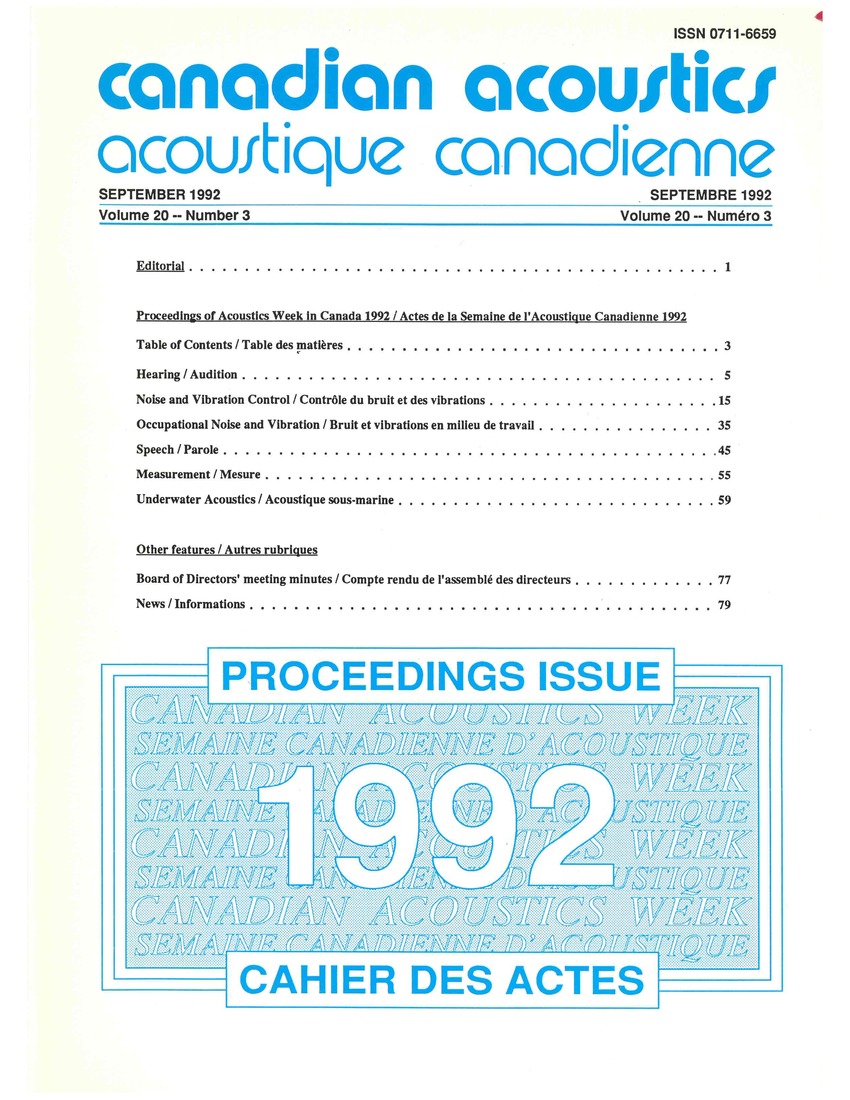Modelling azimuthal and vertical directionality of active sonar systems for undersea reverberation
Mots-clés :
reverberation, sonar, underwater sound, active sonar systems, undersea reverberation, azimuthal directionality, sector coverage, azimuthally-integrated responseRésumé
Traditional methods for modelling undersea reverberation where either the transmitter or receiver has azimuthal directionality approximate the azimuthal component by sector coverage. Often, the effects from other than a main lobe are ignored. In some cases, the width of the sector is chosen such that the azimuthally-integrated response is the same for the sectored coverage as the original sonar in the horizontal plane. Unfortunately, should the sonar have both azimuthal and vertical directivity (which is often the case), accounting for only the main lobe or using a simple azimuthal integration may lead to erroneous reverberation estimates. Historically, inclusion of the full directionality or beam pattern has been too computationally costly to consider, but with the proliferation of modern high-speed computers, this is no longer the case. The full directionality can and in many cases should be includedFichiers supplémentaires
Publié-e
Comment citer
Numéro
Rubrique
Licence
Author Licensing Addendum
This Licensing Addendum ("Addendum") is entered into between the undersigned Author(s) and Canadian Acoustics journal published by the Canadian Acoustical Association (hereinafter referred to as the "Publisher"). The Author(s) and the Publisher agree as follows:
-
Retained Rights: The Author(s) retain(s) the following rights:
- The right to reproduce, distribute, and publicly display the Work on the Author's personal website or the website of the Author's institution.
- The right to use the Work in the Author's teaching activities and presentations.
- The right to include the Work in a compilation for the Author's personal use, not for sale.
-
Grant of License: The Author(s) grant(s) to the Publisher a worldwide exclusive license to publish, reproduce, distribute, and display the Work in Canadian Acoustics and any other formats and media deemed appropriate by the Publisher.
-
Attribution: The Publisher agrees to include proper attribution to the Author(s) in all publications and reproductions of the Work.
-
No Conflict: This Addendum is intended to be in harmony with, and not in conflict with, the terms and conditions of the original agreement entered into between the Author(s) and the Publisher.
-
Copyright Clause: Copyright on articles is held by the Author(s). The corresponding Author has the right to grant on behalf of all Authors and does grant on behalf of all Authors, a worldwide exclusive license to the Publisher and its licensees in perpetuity, in all forms, formats, and media (whether known now or created in the future), including but not limited to the rights to publish, reproduce, distribute, display, store, translate, create adaptations, reprints, include within collections, and create summaries, extracts, and/or abstracts of the Contribution.


